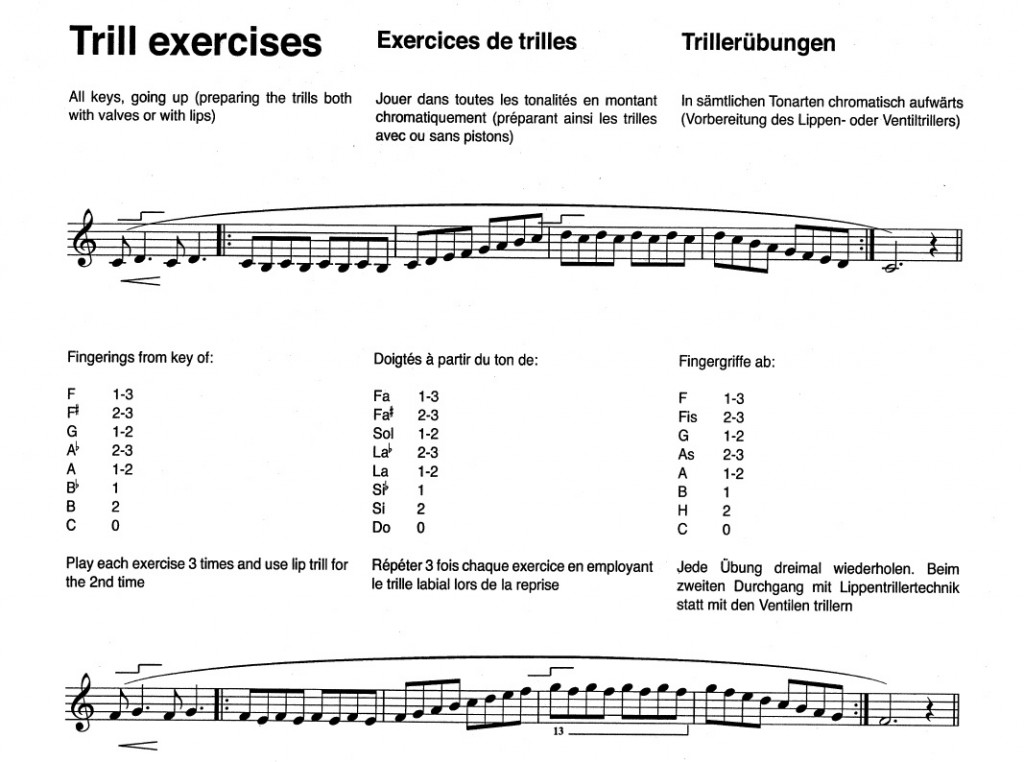This week’s pattern is a current favourite of mine. The exercise comes from Warm-ups and Studies by James Stamp.
The hieroglyphics, fermatas and repeats in Stamp’s exercises can be intimidating. When I was seventeen and first saw the book it looked like a foreign language. But it made more and more sense as I matured, learned about trumpet pedagogy, and met trumpeters who had studied with Stamp. Let’s take a moment to break this one down.

Like most Stamp exercises, the “Trill exercise” begins with a very simple idea (in this case, a one-octave major scale) and elaborates it. These elaborations are designed to reinforce pedagogical concepts. This is the brilliance of Stamp’s teaching: most of what you need to play well is actually built into the exercise. Consequently, if you are playing it as written, in tune, in time and with a great sound, it is correct. No talk of embouchure, no talk of how to do things, just a clear focus on the results.
So, to understand the exercise, all we have to do is look at the “editing” Mr. Stamp has done to the major scale:
Measure 1: A pause (written as a dotted quarter) on the second note of the scale.
Benefit: clean transition and connection between notes (reinforced by the “Tetris symbol” and crescendo) and a sense of sound and security on Do and Re (our trill notes an octave higher)
Measure 2: A written-out trill between Do and Ti.
Benefits: sets up airflow and rhythm, and re-establishes them for repeats
Measure 4: A written-out trill between Do and Re.
Benefits: helps us centre pitches on top of the scale rather than “poking” at them and backing away. In this case the trill takes on added focus as the main point of the exercise, and writing it out adds a sense of rhythmic security and intention.
Measures 2-5: The exercise is repeated three times, with a lip trill the second time.
Benefits: engages our ears as we contrast our valve versus lip trills.
Note that Stamp does not write out the exercise in every key, but rather expects the student to memorize the pattern and get “off book” as quickly as possible. He says this explicitly for other exercises as well (eg: “Concentration”).
Like most exercises, I found a huge benefit to improving this exercise in the lower and middle registers. I hope you enjoy this one, and whether you are a teacher or a student, hopefully your curiosity has been piqued as to how you could apply Stamp’s concepts in other contexts.
